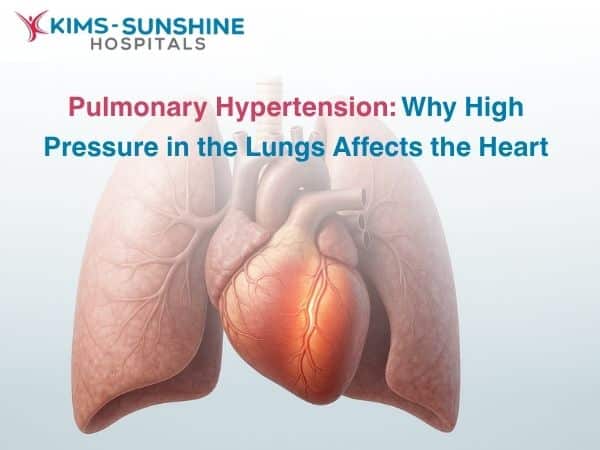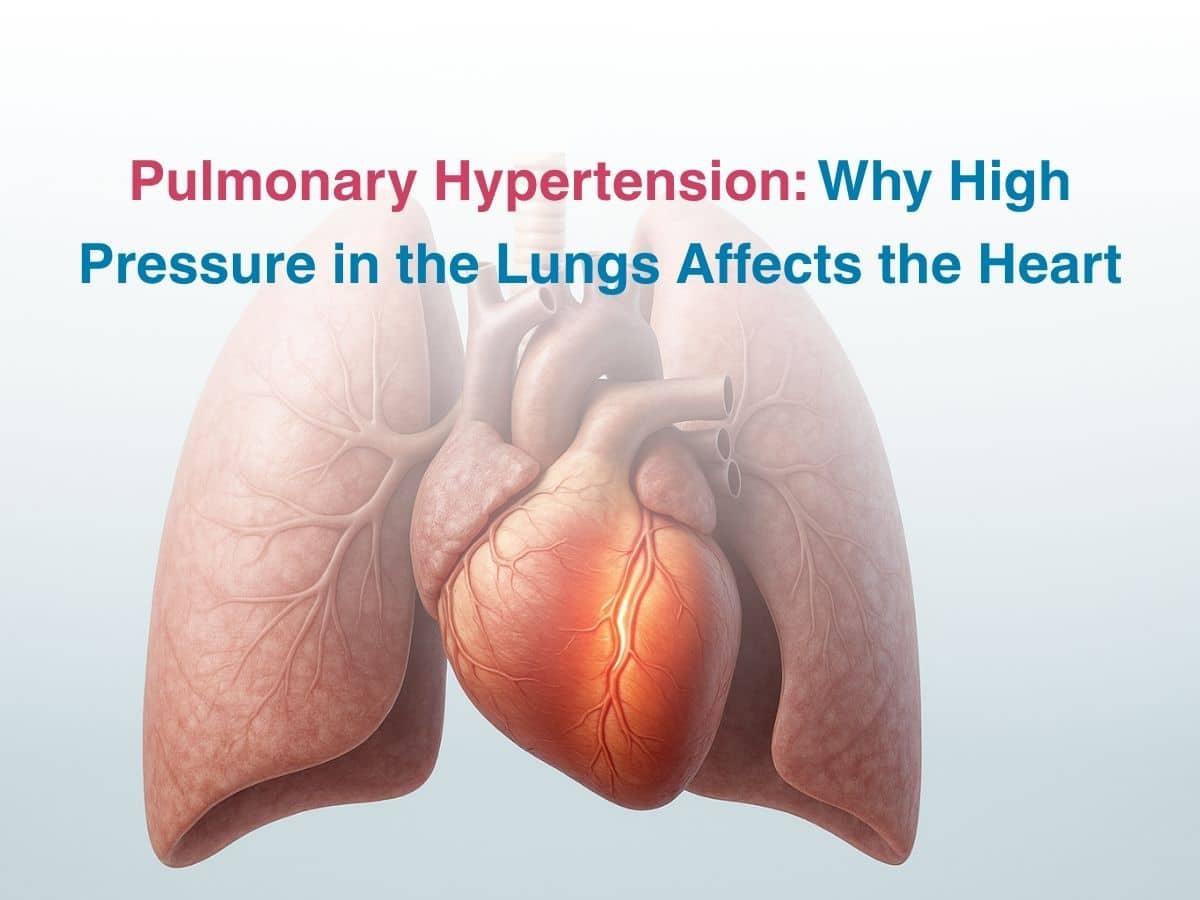
Pulmonary Hypertension: Why High Pressure in the Lungs Affects the Heart
 We all know that hypertension is a condition where blood pressure is high and the heart and arteries work overtime to ensure that blood reaches all parts of the body. Pulmonary hypertension is more local and is limited to the arteries of the lungs and the heart in the chest, which carry deoxygenated blood from the heart to the lungs. The symptoms are subtle and can be easily mistaken for other conditions, which is why diagnosis and timely treatment are important, for improved patient outcomes. Studies show that on an average, about 300 individuals out of every one lakh get affected. In most cases, pulmonary hypertension is observed as a result of another chronic condition- like heart disease or lung disease and this is when it is called secondary pulmonary hypertension.
We all know that hypertension is a condition where blood pressure is high and the heart and arteries work overtime to ensure that blood reaches all parts of the body. Pulmonary hypertension is more local and is limited to the arteries of the lungs and the heart in the chest, which carry deoxygenated blood from the heart to the lungs. The symptoms are subtle and can be easily mistaken for other conditions, which is why diagnosis and timely treatment are important, for improved patient outcomes. Studies show that on an average, about 300 individuals out of every one lakh get affected. In most cases, pulmonary hypertension is observed as a result of another chronic condition- like heart disease or lung disease and this is when it is called secondary pulmonary hypertension.
What Is Pulmonary Hypertension?
Pulmonary hypertension (PH) occurs when blood pressure in the arteries that carry blood to the lungs from the heart is high. If it is not dealt with, it can cause other long term complications- like disrupt the flow of blood or even cause the arteries to get narrower, making smooth blood flow difficult. There are many other complications that can occur if PH is left untreated- like anaemia, blood clot formation or heart arrhythmias, among other conditions. Blood normally enters the lungs from the right ventricle of the heart and when PH is present, constant high pressure can cause the heart muscles of the right ventricle alone to get larger in size- called ventricular hypertrophy. This can continue for a long time and ultimately lead to heart failure.
Causes Of High Blood Pressure In Lungs-
Pulmonary hypertension can develop as a result of some other underlying condition- which can be a disease, an infection or even an environmental pollutant. Accordingly, PH can be classified into 5 types-
- Type 1 is caused due to Pulmonary arterial hypertension (PAH). This can occur due to the presence of other comorbid conditions like HIV, lupus, autoimmune conditions, metabolic diseases or even drug use. If the root cause remains unknown, then you most likely have ‘idiopathic’ PAH.
- Type 2– The left side of your heart gets affected due to valve disease, heart failure, left ventricular hypertrophy or mitral valve disease respectively.
- Type 3 – This is observed when you have lung disease or related conditions like COPD, interstitial disease or sleep apnoea which is obstructive in nature.
- Type 4– If your lungs have clots in them, a clot from elsewhere gets lodged in your lungs or if there is scarring due to injury or excessive inflammation, then you have PH.
- Type 5– Some people may have autoimmune conditions which can increase their risk of developing PH, but otherwise, there are no known causes.
Symptoms Of Pulmonary Hypertension-
The earliest symptoms include feeling breathless when you exert yourself more than usual. But, as PH progresses, you may notice other signs-
- Bluish looking lips or skin- due to less oxygen availability
- Chest pain
- Feeling faint or dizzy
- Feeling very tired and not having much of an appetite.
- Fluid retention causes edema in your legs or feet.
- Faster than usual heart rate
- Pain on the upper right side of the abdomen is also noticed at times.
Pulmonary Hypertension Diagnosis (Echocardiogram, Right Heart Catheterization)-
Two important diagnostic tests are used to check for PH-
- Right heart catheterisation– this is when the blood pressure of your pulmonary artery is measured using a catheter or thin wire, so that your doctor can check how well your heart is beating and how much blood is being pumped every minute.
- Doppler ECG– Sound waves are used to check how the heart valves are working and how well blood is being pumped – in an effort to measure the systolic pulmonary artery pressure.
Blood tests and imaging may also be recommended. Sleep tests may be done if you have sleep apnoea. Your doctor may also try to look for blood clots.
Treatment Options For Pulmonary Hypertension-
Medications can be used in some cases to treat PH-
- PAH or type 1 can be treated with diuretics, calcium channel blockers, pulmonary vasodilators or with oxygen therapy. Anticoagulants are commonly prescribed too.
- CTEPH or Type 4 PH can be dealt with surgically- like a balloon angioplasty, pulmonary endarterectomy or a balloon atrial septostomy.
Conclusion
Pulmonary hypertension is a silent condition and symptoms can mimic other issues, causing the root problem to be ignored. Many types of PH cannot be dealt with medications alone, so making sustainable changes to your lifestyle- like eating a heart friendly diet, getting regular exercise, managing blood lipid levels can be helpful overall. If you delay diagnosis and treatment, then you risk major heart or lung failure, so pay attention to your body, today and always!






